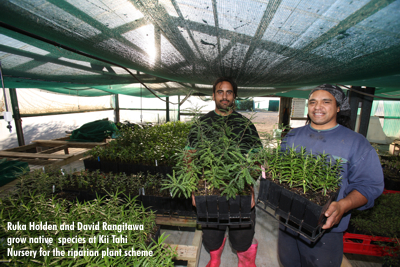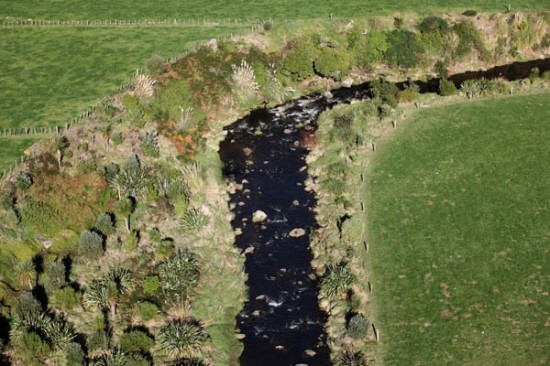Fencing and planting streambanks is fast becoming the norm among Taranaki farmers.
By the end of December, the Taranaki Regional Council had received orders for 200,000 plants under its riparian bulk purchase scheme, compared with 90,000 by the end of December 2009.
The Council Chairman, David MacLeod, says the fact that farmers are ordering more plants, and ordering them earlier, is a sure a sign that riparian fencing and planting are becoming part of the day-to-day business of farming, scheduled into farm budgets and work programmes as a tax-deductible expense.
More than 95% of the region’s dairy farmers now have individual riparian plans for their properties, and Mr MacLeod says it’s pleasing to see implementation of the plans ramping up.
“Now the plans cover almost the entire ring plain, the Council’s land management officers are fully focused on helping farmers make these plans a reality,” he says.
“They’re finding farmers are more receptive to undertaking the work. For example, we’re getting orders from people who’ve had riparian plans for a number of years without beginning the work – they’ve decided that now’s the time to get started and have ordered a manageable number of plants, say 300, as a beginning.
“And of course there are also many who are well on the way to finishing, as they they’ve been consistently ordering their plants each year to work through their programme.”
Mr MacLeod says another sign of farmers’ growing commitment to riparian protection is that many are ordering two years ahead.
“So far, 80 have ordered plants for the 2012 planting season. Early orders are a key to the success of the bulk-purchase scheme, and farmers doing so also get a discount.
“We’re aiming to get 7% of the project’s total remaining planting done during 2012, and these early orders are an essential first step towards achieving the aim.”
The Dairy Section Chair of Taranaki Federated Farmers, Derek Gibson, says that in his personal opinion, riparian protection work is not a major cost if it is programmed over a number of years. Through the Council’s bulk-purchase scheme, 300 plants cost around $1,000, while a two-wire fence costs $3.50 to $4 a metre, including labour.
“This level of tax-deductible investment should be manageable for most farmers when you consider the overall budget for an average dairy farm,” says Mr Gibson. “It’s also a practical and cost-effective demonstration that stewardship of the land is something farmers take seriously.”
The Council’s Director-Operations, Rob Phillips, says if every riparian plan-holder ordered 300 plants this season, around 600,000 riparian plants would be added to the almost 2 million that are already established along stream banks to protect water quality.
“If we could achieve this sort of momentum, we would be well on the way to meeting the region’s Dairying and Clean Streams Accord target of having 90% of the riparian fencing and planting completed by 2015,” he says.
“Taranaki dairy farmers have a reputation as pioneers in the industry, always at the forefront of new developments. We’re sure most of our dairy farmers will meet the challenge of completing the riparian programme with the same ‘can-do’ attitude.”
So what about Northland?
The recently released feedback on the new Northland Regional Policy Statement Discussion Doucument (click here for more information) showed there was very strong support for the development of integrated catchment management plans (ICMPs) as a means to improve water quality and biodiversity. The key points raised about ICMPs included:
- ICMPs are resource intensive so they should be done on a prioritised catchment basis;
- ICMPs should address as many issues as possible, within the respective catchment – not just the most do-able; and
- The costs of not developing ICMPs outweigh the costs of preparing and implementing them.



Comments